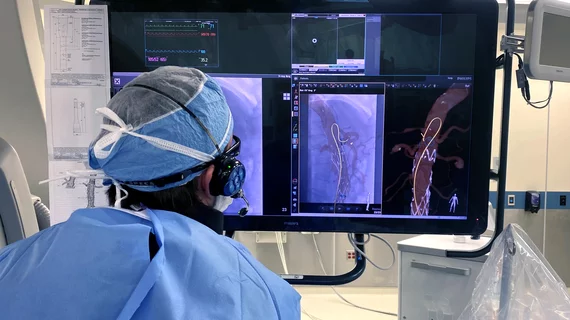Light-powered 3D imaging system guides vascular surgeries without X-ray
Philips has released a first-of-its-kind guidance system to help physicians navigate blood vessels in real-time during catheter based surgeries, without the need for an X-ray. Instead, the aptly named LumiGuide system operates using only light.
In a statement sent to Health Imaging, the company called the system a “3D human GPS.” Powered by a fiber optic guidewire, LumiGuide allows for precise navigation of the body during complex aortic stent graft procedures, producing a high-quality, color display that highlights catheters and other surgical devices in the body, all without exposing the patient to excessive radiation from cath lab angiography systems that use X-ray imaging.
To guide the fiber optic wire and produce a 3D image—capable of being rotated to view any angle—Philips said it deploys AI to automatically register the location of the guidewire with the imaging platform, effectively producing a live-feed model of a patient’s arteries and surrounding tissue.
The system was piloted on real patients at Maastricht University Medical Center in the Netherlands, and the University of Alabama at Birmingham. After the success, LumiGuide was released to nine aortic centers for a clinical study involving more than 900 patients undergoing vascular surgery. According to Philips, the medical centers saw a 37% reduction in complex aortic procedure time, and patients' radiation exposure is estimated to be reduced by 56%.
The LumiGuide is not yet available to the broader market, as Philips said it is looking to gather more data from the limited release. However, plans are underway to upgrade the system and expand its uses beyond aortic procedures. The company said it's all part of a broader goal to make as many surgeries radiation-free as possible.

